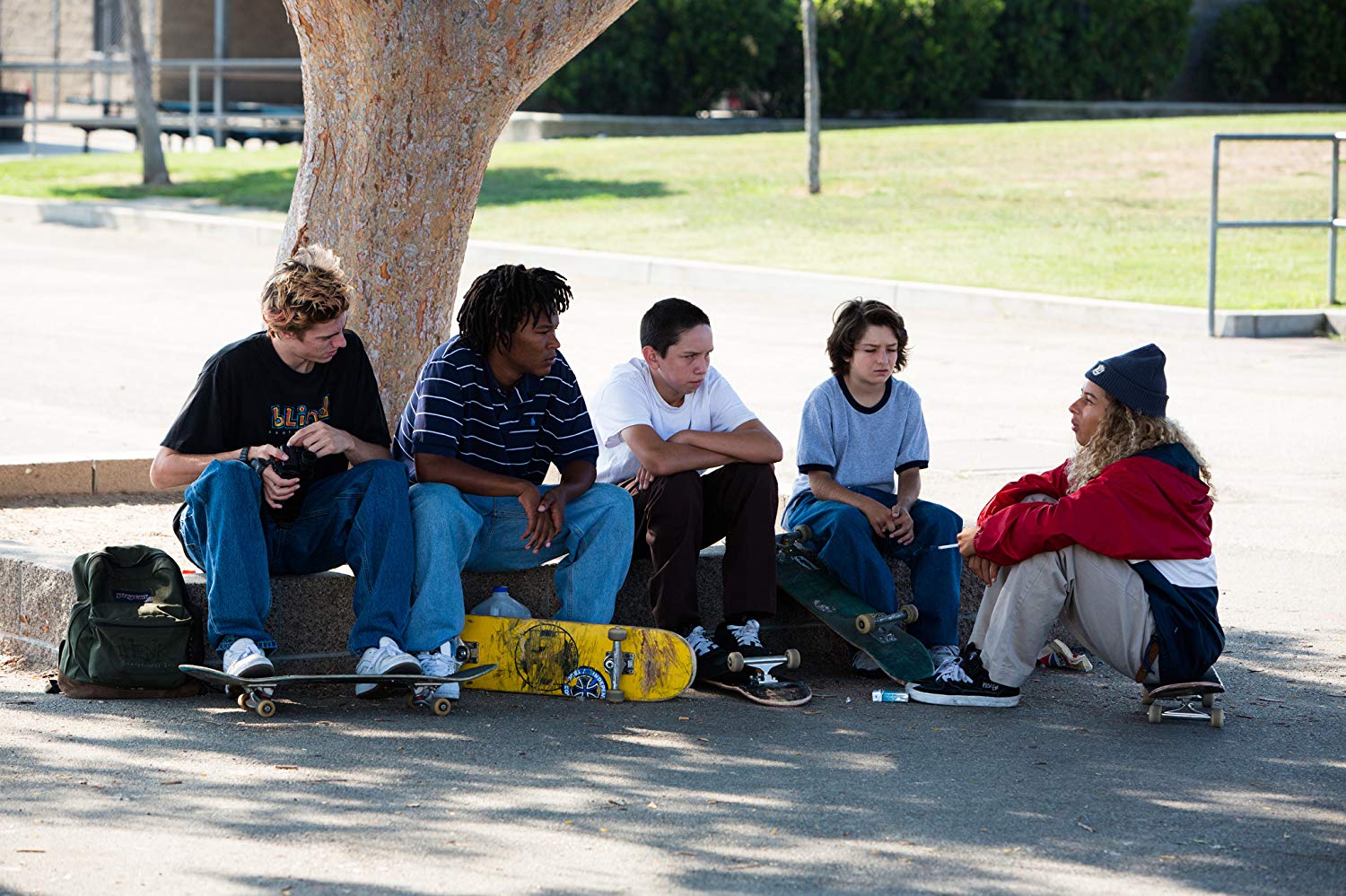REVIEW: “Mid90s” is a personal ode to 90s skate culture

Sunny Suljic (second from right) stars as Stevie, a 13-year-old navigating his troubled home life and the 1990s Los Angeles skate scene in Jonah Hill’s gritty directorial debut. The film was released on Friday. (Photo from IMDb)
 Movies allow audiences to glean experience through another’s eyes, usually someone they would never be acquainted with otherwise. Jonah Hill’s directorial debut “Mid90s” immerses its audience in an atypical setting, one not glamorous enough for a big Hollywood blockbuster, but nonetheless captivating: mid-1990s skater culture. Hill, who also wrote the film, vehemently refused to make his skater protagonists monolithic, made up solely of curse words and alcohol; instead, he sheds light on their inner lives, revealing their personal motivations for skating.
Movies allow audiences to glean experience through another’s eyes, usually someone they would never be acquainted with otherwise. Jonah Hill’s directorial debut “Mid90s” immerses its audience in an atypical setting, one not glamorous enough for a big Hollywood blockbuster, but nonetheless captivating: mid-1990s skater culture. Hill, who also wrote the film, vehemently refused to make his skater protagonists monolithic, made up solely of curse words and alcohol; instead, he sheds light on their inner lives, revealing their personal motivations for skating.
The movie presents a slice of Stevie’s (Sunny Siljic) life. He is a 13-year-old growing up with a single mother and an abusive older brother (his first scene consists of his brother violently shoving him out of his room and slamming him against a wall). Another early scene of a birthday dinner shows just how closed off this family is from one another. Hill skillfully constructs this scene with shots that never include two members in one frame, showing just how disconnected they are.
Quietly fed up with his lack of acceptance at home, Stevie slowly assimilates into a group of four skaters. Never having touched a skateboard before, the 13-year-old spends countless hours practicing to little avail. Every fall marks another failure, but the moment he successfully lifts the board without falling, he rejoices as if he’s just won the lottery.
Yet, falling is what Stevie seems to do most in “Mid90s.” He falls whenever he wants to prove to himself, to his brother and to his friends that he’s strong enough to handle things by himself. Falling becomes the film’s beat, marking Stevie’s ceaseless attempts to learn the ropes of skateboarding (and life) the hard way.
Clocking in at a slim one hour and 24 minutes, “Mid90s” is a concise work. Minimal in dialogue, the film is not as concerned with conversations as it is with actions and the unspoken intentions behind them. Skating, the principal action, is not a mindless hobby for Stevie and his friends — it gives them a sense of freedom and belonging. Rarely putting this idea into words, the film instead transmits the feeling solely through sight and sound.
Hill uses the story’s setting to the fullest, dousing the movie’s atmosphere with ’90s culture but abstaining from gratuitous nostalgia. Every emotional flourish comes with a crescendo in the poignant soundtrack. The music isn’t made up of the typical hits associated with the era. Instead, it’s rife with tracks like the liberating “Gyöngyhajú lány” by Hungarian rock band Omega, that may not be popular, but encapsulates exactly what the skaters are feeling as they do what they love.
Several times throughout the film, Hill repeats a colorful long shot of the skaters coming down the center of a wide highway during golden hour — always backed by a ’90s tune, the shot exudes the romance every skater (in the film and in reality) has with liberating moments like these.
Every one of his friends is already going through painful trials by the time Stevie joins the group, but according to them, he’s the one who “takes the hardest hits out of anyone.” By never leaving Stevie’s side, Hill makes the audience hurt with every one of Stevie’s hard falls, rejoice with his few victories and absorb the liberating thrill of skateboarding.
